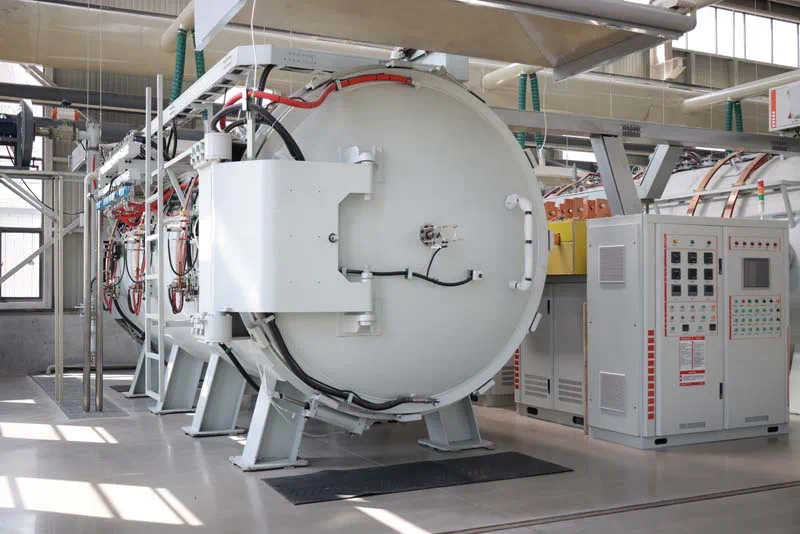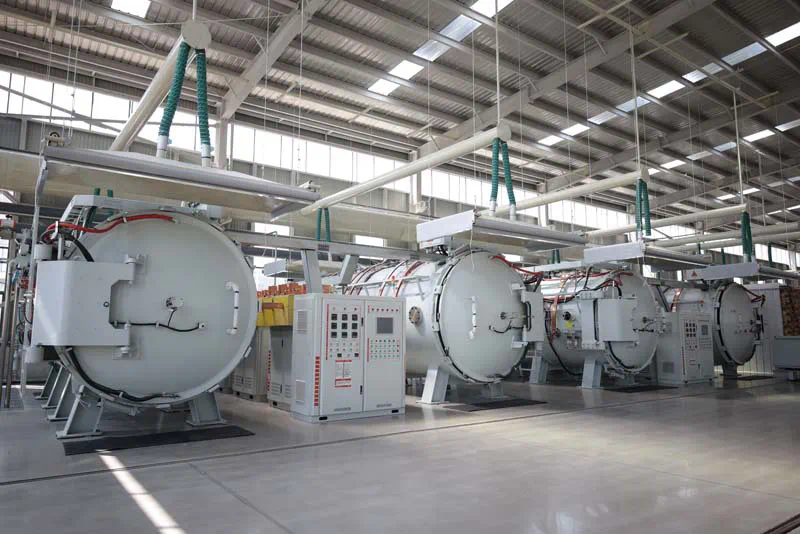Recycling and Reuse of Silicon-Carbide Crucibles: An Environmental and Cost-Benefit Analysis
Silicon carbide crucibles are an essential tool in a variety of high-temperature industrial processes, including metal casting, semiconductor manufacturing, and the production of specialty materials. These crucibles are renowned for their ability to withstand extreme temperatures and their excellent thermal conductivity, making them the material of choice in many high-performance applications. However, like many industrial products, they are subject to wear and degradation over time, leading to the need for replacement. The disposal of worn-out or damaged silicon carbide crucibles can have significant environmental and economic implications, raising the question of whether recycling or reusing these crucibles is a viable and sustainable alternative.
This article provides an in-depth analysis of the recycling and reuse of silicon carbide crucibles, focusing on the environmental and cost-benefit aspects of these processes. We will explore the methods of recycling and reusing these crucibles, the challenges and opportunities associated with these practices, and the broader implications for sustainability in industrial manufacturing. By the end of this article, readers will gain a comprehensive understanding of the potential benefits and drawbacks of silicon carbide crucible recycling and reuse, both from an environmental and a financial perspective.
1. Introduction to Silicon-Carbide Crucibles
Silicon carbide (SiC) is a compound of silicon and carbon, which is commonly used in high-temperature applications due to its exceptional properties. It is characterized by high thermal conductivity, resistance to thermal shock, and mechanical strength at elevated temperatures. These properties make it an ideal material for crucibles that are used to melt and cast metals or other high-temperature materials in industries such as metallurgy, ceramics, and semiconductor manufacturing.
Crucibles made from silicon carbide are often exposed to intense conditions during their operational life, including rapid heating and cooling cycles, which can lead to cracking, wear, and eventually failure. As a result, many crucibles are discarded after a relatively short period, which raises significant concerns regarding the environmental impact of disposal and the associated costs of purchasing new crucibles. In light of these challenges, the focus has shifted toward the possibility of recycling and reusing these crucibles as a means of reducing waste, lowering costs, and conserving resources.
2. The Importance of Recycling and Reuse
The importance of recycling and reusing silicon carbide crucibles lies primarily in the environmental and economic benefits they offer. Recycling helps conserve natural resources, reduces the environmental impact of manufacturing new crucibles, and prevents the accumulation of waste in landfills. Reuse, on the other hand, extends the life of the crucibles, reducing the need for frequent replacements and contributing to overall cost savings for industrial operations.
In the context of silicon carbide crucibles, recycling and reuse also help address specific challenges, such as the scarcity of raw materials and the energy-intensive nature of manufacturing these products. By developing efficient recycling and reuse processes, industries can reduce their reliance on the extraction of virgin materials, which is often energy-intensive and environmentally harmful. Additionally, the economic benefits of recycling and reuse can help companies reduce operating costs and increase their profitability.
3. Environmental Implications of Silicon-Carbide Crucible Disposal

The disposal of silicon carbide crucibles can have significant environmental consequences if not managed properly. When crucibles are discarded in landfills or incinerated, they can release harmful chemicals and pollutants into the environment, including heavy metals, volatile compounds, and carbon emissions. Moreover, the production of new silicon carbide crucibles requires the extraction and processing of raw materials, which is energy-intensive and contributes to resource depletion.
Silicon carbide is primarily produced from silica sand and petroleum coke, both of which are finite resources. The extraction of these materials involves mining and processing, which can result in habitat destruction, water contamination, and air pollution. Additionally, the manufacturing process for silicon carbide crucibles requires high temperatures, which consumes large amounts of energy and generates carbon dioxide emissions. As a result, the environmental footprint of silicon carbide production is significant, and efforts to recycle and reuse these crucibles can help mitigate some of these impacts.
By reusing and recycling silicon carbide crucibles, industries can reduce the demand for virgin materials and minimize the environmental impact of manufacturing. Recycling also helps reduce waste, preventing crucibles from being sent to landfills, where they would take up space and potentially release harmful substances into the surrounding environment.
4. Recycling Methods for Silicon-Carbide Crucibles
The process of recycling silicon carbide crucibles typically involves breaking down the used crucibles into smaller pieces, which can then be reprocessed to create new products. There are several different methods used to recycle silicon carbide crucibles, depending on the specific type of crucible and the desired end product.
4.1 Mechanical Recycling

Mechanical recycling involves physically breaking down the used crucibles into smaller pieces through grinding or crushing. This process does not require high temperatures and can be carried out using specialized equipment designed for handling ceramic materials. The resulting material can be used as a feedstock for the production of new silicon carbide products, including new crucibles or other industrial components.
Mechanical recycling is a relatively simple and low-cost method for recycling silicon carbide crucibles, but it is limited in its ability to recover the full range of valuable materials from the crucibles. This method is most effective for larger, less-damaged crucibles that can be easily processed into reusable material.
4.2 Chemical Recycling
Chemical recycling involves using chemical processes to break down the silicon carbide material into its constituent elements, such as silicon and carbon. This can be achieved through processes like pyrolysis or carbothermal reduction, which involve heating the crucible material to very high temperatures in the presence of specific chemicals.
Chemical recycling is more complex than mechanical recycling and requires careful control of temperature and chemical conditions to ensure the safe and effective breakdown of the material. However, it offers the potential to recover a higher proportion of the raw materials, such as silicon and carbon, which can then be reused in the production of new crucibles or other products. This method is particularly useful for smaller crucibles or those that are heavily damaged and cannot be recycled through mechanical means.
4.3 High-Temperature Recycling
High-temperature recycling, also known as thermal recycling, involves melting the silicon carbide crucibles at extremely high temperatures, usually in a specialized furnace or kiln. The process is similar to the way silicon carbide crucibles are initially manufactured, but instead of creating new crucibles, the material is reformed and processed into different shapes or forms that can be reused in industrial applications.
High-temperature recycling is a highly energy-intensive process, but it allows for the recovery of a significant amount of material, especially in cases where the crucibles have been subjected to severe wear or damage. The main challenge with this method is the high cost of energy and the need for specialized equipment capable of reaching the required temperatures.
4.4 Potential Challenges in Recycling Silicon-Carbide Crucibles
While the recycling of silicon carbide crucibles offers several benefits, it also presents a number of challenges. These challenges include the high energy requirements of certain recycling processes, the difficulty in recovering specific raw materials, and the potential for contamination of the recycled material with other substances. Additionally, the quality of the recycled material may not always meet the stringent standards required for high-performance applications, which could limit its reuse in certain industries.
Another challenge is the availability of recycling infrastructure. While some companies have developed specialized facilities for recycling silicon carbide crucibles, the process is not yet widely available in all regions, which can make it difficult for companies to access recycling services. Furthermore, the economic viability of recycling depends on factors such as the cost of raw materials, the price of energy, and the scale of the recycling operation.
5. Cost-Benefit Analysis of Recycling and Reuse
5.1 Environmental Cost-Benefit
From an environmental perspective, the benefits of recycling and reusing silicon carbide crucibles are clear. By recycling or reusing these materials, silicon carbide crucible suppliers industries can reduce the need for raw material extraction, decrease energy consumption, and minimize the environmental impact of manufacturing. The recycling of silicon carbide crucibles can also prevent the accumulation of waste in landfills and reduce the release of harmful chemicals into the environment.
However, the environmental benefits of recycling are not without cost. The recycling process itself requires energy, and some methods, such as high-temperature recycling, can generate significant carbon emissions. Additionally, the efficiency of the recycling process may be affected by factors such as contamination or the quality of the recycled material, which could limit the overall environmental benefits.
5.2 Economic Cost-Benefit
From an economic perspective, the cost savings associated with recycling and reusing silicon carbide crucibles can be significant. The primary economic benefit is the reduction in the need for new crucibles, which can be expensive to manufacture. By recycling or reusing existing crucibles, companies can lower their procurement costs and reduce the overall cost of production.
However, the cost of recycling is not negligible. Some recycling processes, such as high-temperature recycling or chemical recycling, can be expensive due to the energy required and the specialized equipment involved. Additionally, the quality of recycled material may not always meet the required standards, which could necessitate additional processing or quality control measures, further increasing the cost.
5.3 Long-Term Benefits
Over the long term, the adoption of recycling and reuse practices for silicon carbide crucibles can lead to significant cost savings and environmental benefits. As recycling technology advances and economies of scale are achieved, the cost of recycling may decrease, making it a more viable option for a wider range of industries. Furthermore, the reduction in the environmental impact of manufacturing and the conservation of natural resources can contribute to a more sustainable and responsible approach to industrial production.
6. Conclusion
In conclusion, the recycling and reuse of silicon carbide crucibles offer both environmental and economic benefits that make them a worthwhile consideration for many industries. By adopting recycling and reuse practices, companies can reduce their reliance on virgin materials, lower their production costs, and minimize their environmental footprint. While there are challenges associated with the recycling of
